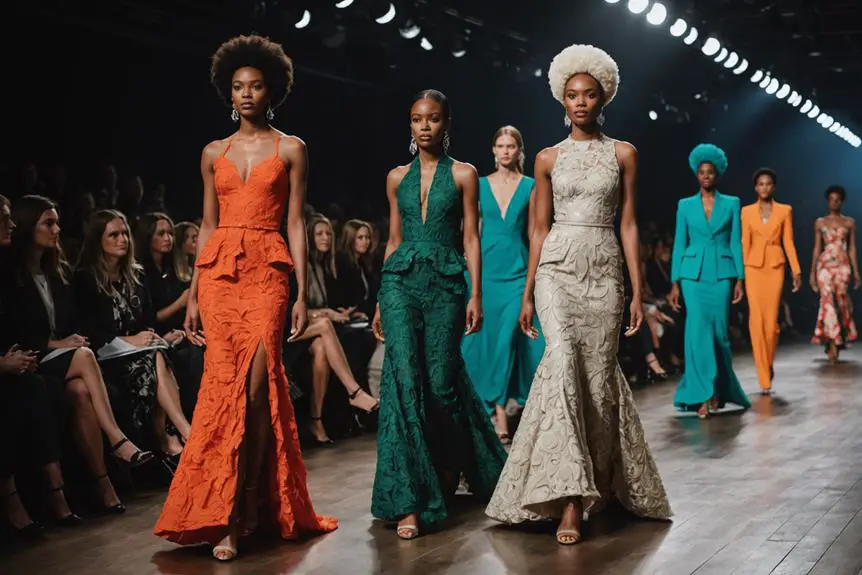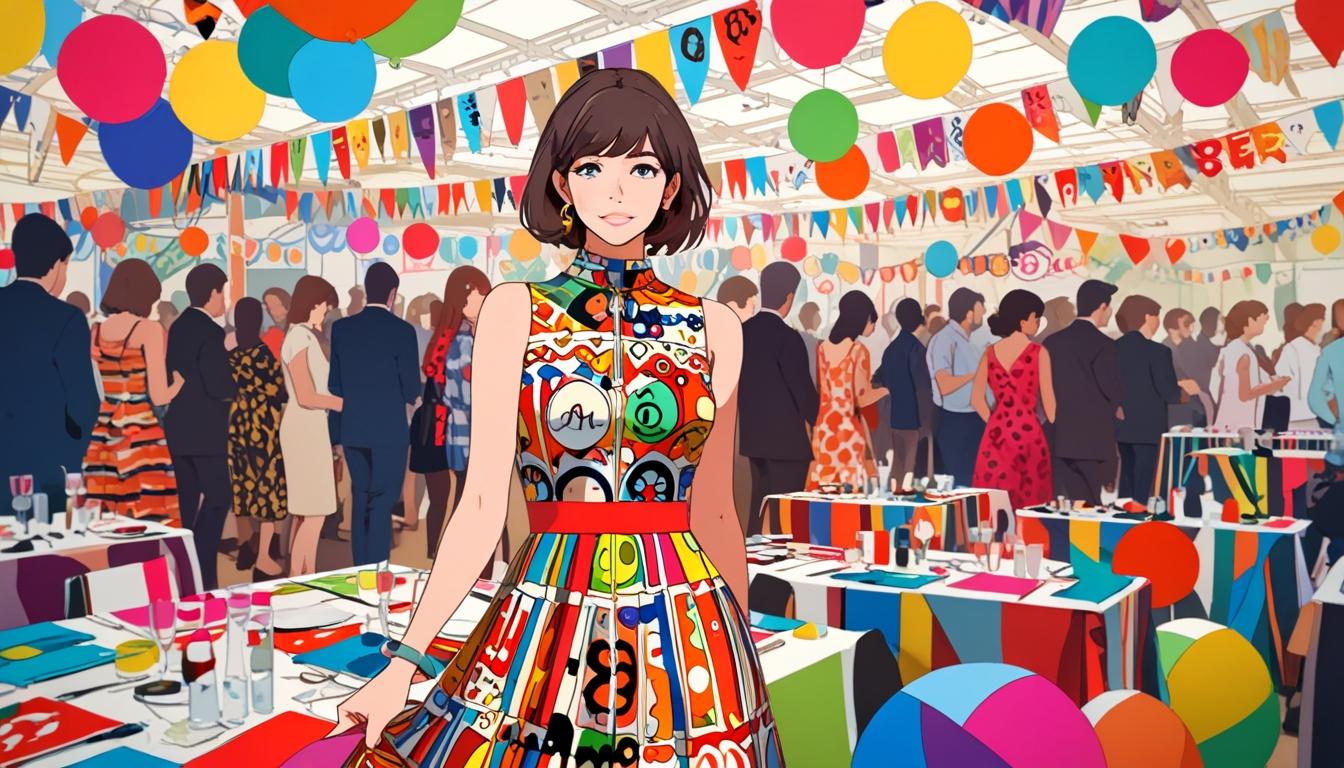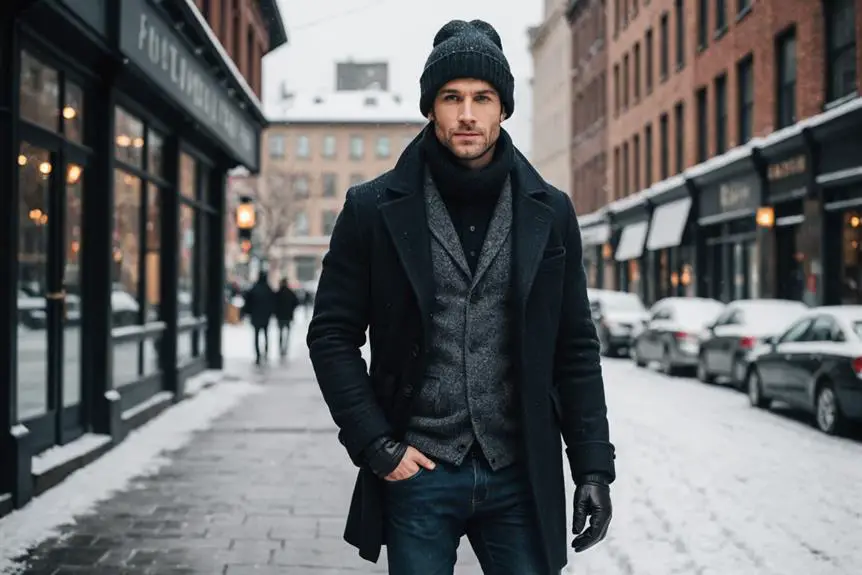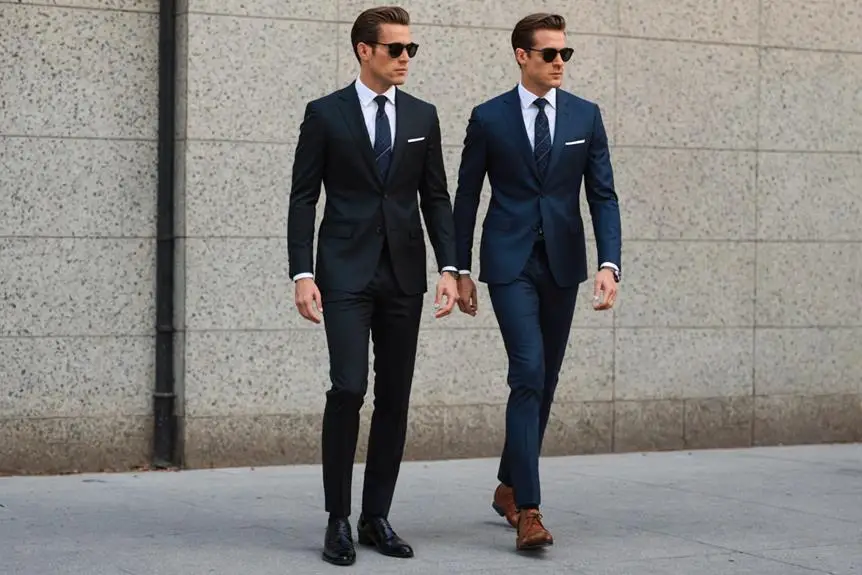Imagine standing at the crossroads of elegance and necessity, much like women in the 1930s who navigated the harsh realities of the Great Depression while still pursuing style. You'll notice how the era's fashion reflected resilience, with bias-cut dresses and wide-leg trousers that balanced grace and practicality. As you explore further, you'll uncover the subtle yet profound choices behind fabric and color that mirrored the times. What do these choices reveal about the women who wore them, and how did their fashion influence the decades that followed?
Historical Overview of 1930s Fashion
In the midst of the economic struggles of the Great Depression, 1930s fashion underwent a significant transformation that reflected both the challenges and aspirations of the era. You might be surprised to learn that even in tough times, women found ways to express themselves through clothing. This decade marked a shift toward more conservative styles, as cost-saving measures became essential. Women embraced clothing that was both practical and elegant, like the bias-cut dress, which hugged the body in all the right places.
Hollywood glamour also played a huge role in shaping fashion trends. Movie stars became style icons, and suddenly, luxurious fabrics like silk and satin were all the rage for evening wear. Who doesn't want to feel like a star, right? Accessories became key players too! Wide-brimmed hats, gloves, and statement jewelry weren't just extras; they were must-haves for any outfit.
Despite the prevailing economic challenges, some women started to incorporate bolder patterns and bright colors into their wardrobes. It was a way to express optimism and a desire for brighter days ahead. So, whether you were dressing up for a night out or keeping it casual, 1930s fashion had something to offer. And who knows? Maybe a touch of that 30s flair could inspire your own wardrobe today! Fashion's all about creativity and self-expression, after all!
Key Styles and Silhouettes
The key styles and silhouettes of 1930s women's fashion reflect a blend of practicality and elegance that defined the decade. You'll notice that dresses became more fitted around the waist, with flowing skirts that allowed for movement while still looking stylish. This era was all about celebrating femininity, and you could see it in the way fabrics draped over the body.
Here's a quick look at some key styles and silhouettes from the 1930s:
| Style of Clothing | Description |
|---|---|
| Bias-Cut Dresses | Flattering and figure-hugging, often with a low neckline. |
| Peplum Tops | Short, flared tops that accentuated the waist. |
| Wide-Leg Trousers | Comfortable and chic, perfect for a casual look. |
These styles were practical for everyday wear but still exuded a sense of glamour. You might've seen women pairing these dresses with elegant hats and gloves, completing their outfits with a sense of sophistication. The emphasis on the natural waistline not only enhanced curves but also added a touch of romance.
Fabrics and Color Trends
Elegance in fabric choice and color can transform an outfit, making it essential to understand the trends that shaped 1930s women's fashion. Back then, textile technology was evolving, and you could see it reflected in the lighter fabrics that started to gain popularity. Instead of heavy silks and cottons, women began to embrace softer, more breathable options. This shift not only enhanced comfort but also aligned with the growing appreciation for the importance of fabric care to preserve the integrity of these delicate materials. Just think about how comfortable that must've felt!
Color trends also took a turn during this time. The vibrant hues and bold patterns of the 1920s gave way to more muted, conservative palettes, largely influenced by the economic challenges of the era. Isn't it interesting how color symbolism plays into all this? For instance, pastels often represented spring, while darker shades echoed the more somber tones of autumn and winter. It's like the mood of the times was woven right into the fabric!
Today, there's a growing focus on sustainable fabrics, and it's a trend that's definitely worth noting. Eco-conscious consumers are seeking materials that minimize environmental impact—think organic cotton and recycled polyester. It's a smart choice that's both stylish and kind to our planet!
Accessories of the 1930s
Accessories played a pivotal role in defining the style of the 1930s, complementing the era's focus on practicality and sophistication. You couldn't step out without the right pieces to complete your look! One standout item was the cloche hat, which saw an amazing evolution during the decade. These snug-fitting hats hugged your head and added a touch of elegance, often decorated with ribbons or flowers.
Then there were gloves—oh, the gloves! Long, luxurious gloves made from soft leather or satin became a must-have, extending past the elbow for those fancy nights out. They weren't just for warmth; they were a statement. Can you imagine slipping on a pair of those for a big event? Talk about feeling glamorous!
Handbag designs also took center stage. Small, structured handbags made from high-quality materials like leather or satin became the trend. You'd often find intricate designs and embellishments that really showcased craftsmanship. They were perfect for carrying your essentials, but let's be honest, they were more about style than function.
Don't forget about jewelry! Bold statement pieces like brooches and necklaces featuring colorful gemstones were all the rage, reflecting the Art Deco influence. And scarves? They were everywhere, adding flair as they wrapped around your neck or tied on your head. So, ready to embrace these fabulous accessories? They're not just add-ons; they're essential to capturing that iconic 1930s vibe!
Influential Designers and Brands
Throughout the decades, influential designers and brands have shaped women's fashion, leaving lasting impressions on style and trends. Think about how Coco Chanel flipped the script in the early 20th century. She introduced practical and feminine silhouettes, making comfort fashionable! Then, there was Dior in the 1940s with his iconic "New Look," which celebrated that hourglass figure, making women feel fabulous after the war. Similarly, brands like Burberry have evolved considerably over time, reflecting changes in fashion and culture, particularly with their iconic trench coats that became a staple in women's wardrobes. It's fascinating to explore their history and evolution as they transformed from outdoor attire to high fashion.
But it doesn't stop there! Nowadays, brands like Gucci and Prada keep pushing boundaries with innovative designs that reflect modern aesthetics. Plus, Stella McCartney is leading the sustainable fashion movement, proving you can be chic and eco-friendly at the same time. Isn't that inspiring?
And let's not forget about the exciting designer collaborations! You've probably seen partnerships like H&M teaming up with fashion icons like Karl Lagerfeld or Balmain. These collaborations have made designer styles accessible, allowing everyone to embrace the latest trends without breaking the bank.
Here are some emotions to feel while exploring these influential names:
- Excitement for new trends!
- Nostalgia for iconic styles!
- Inspiration from sustainable practices!
- Joy in affordable luxury!
Fashion isn't just about clothes; it's about evolution. It's about how these designers and brands continually redefine what it means to dress well. So, what's your favorite fashion moment in history?
Cultural Impact on Fashion
How did cultural shifts shape the way women dress? Well, it's all about the times! Take the 1920s, for instance. This decade marked a massive change in women's fashion, showcasing boyish silhouettes and less restrictive clothing. Yes, this was a bold statement of women's liberation after World War I! You can totally see the feminism influence here, as women started breaking free from societal norms. Similarly, brands like FUBU emerged in the 1990s, reflecting cultural movements and reinforcing the idea of representation in fashion through their urban style and community-driven branding FUBU's cultural significance.
Then came the Great Depression in the 1930s. Times were tough, and that showed in fashion. Women leaned toward more conservative styles, focusing on practicality and affordability. It was all about making the most out of what they had. Fast forward to the 1940s, and the wartime vibes kicked in. Clothing became functional and durable, adopting military-inspired colors and styles due to fabric shortages. Talk about making lemonade out of lemons!
Throughout the 20th century, each decade revealed distinct styles that mirrored changing attitudes towards women's roles. Fashion wasn't just about looking good; it was cultural symbolism, representing the spirit of the times. Accessories like statement jewelry and handbags also played a huge role, showcasing personal expression and social status.
Frequently Asked Questions
What Is a Women's Size S?
When you explore women's size S, think of it as a delightful journey through size measurement charts. Fashion brand sizing varies, so remember to embrace those wonderful women's fit variations for the perfect look!
What Has Happened to M&S Clothing?
You've noticed M&S's brand evolution, embracing sustainability and modern trends. Their commitment to eco-friendly practices and expanded size inclusivity shows how M&S is adapting to consumer demands while staying relevant in a competitive market.
What Is the SS Season in Fashion?
Imagine a garden blooming; that's the SS season in fashion. You'll see vibrant spring styles, as designers reveal seasonal trends based on fashion forecasts, embracing light fabrics and relaxed silhouettes perfect for warmer days ahead.
What Does S CH Mean in Women's Clothing?
When you see "S CH" in clothing, it indicates a small size based on Chinese measurements. Understanding size conversions helps you navigate fashion trends and guarantees your clothing fits perfectly, avoiding potential fit issues.




